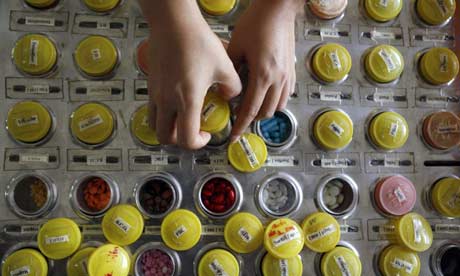
A radical new strategy to stop the Aids epidemic in its tracks was proposed yesterday by World Health Organisation scientists but ran into immediate controversy over its implications for human rights.
The plan involves testing everybody for HIV every year in hard-hit areas like
sub-Saharan Africa and immediately putting those who are positive on Aids drugs. It could slash dramatically the number of new infections, because Aids drugs lower the levels of virus in the body, making HIV transmission through unprotected sex much less likely.
But the strategy, expounded in a paper published online today by the Lancet medical journal, raises major issues both over implementation and over ethics.
Currently people who are HIV positive are not put on treatment until they need it, because of the toxicity and side-effects of antiretroviral drugs. It raises the prospect of subjecting people to potential medical harm for the public good, rather than their individual benefit. "We wouldn't do that in the UK," said John Howson of the International HIV/Aids Alliance. "These are huge issues."
The authors of the paper include Kevin de Cock, HIV/Aids director at the WHO, who points out that this is a mathematical model for discussion, but says it offers hope at a time when other avenues appear to have closed. If this could be implemented in sub-Saharan Africa, he told the Guardian, "the proportion of people with HIV would run to under 1% in less than 50 years".
Prospects for a vaccine against HIV infection have slumped after a number of failures, particularly the halting last year of a trial by the pharmaceutical company Merck around which there had been great optimism. Microbicides - virus-killing gels that women could use before sex - have also failed to produce results. The biggest and best achievement in sub-Saharan Africa so far has been the roll-out of antiretroviral drugs, which are now keeping 3 million people alive.
This year, Swiss experts published a consensus statement declaring that people with HIV on effective antiretroviral drugs for at least six months are not infectious. "The subject of antiretroviral therapy for HIV prevention and how best to use it has risen to the top of the scientific agenda, not least because of the discouraging results of vaccine and microbicide research," said De Cock.
He pointed out the gravity of the situation in HIV-hit regions. In 2007, 3 million people were on drugs, but 7 million were in imminent danger of dying if they did not get them soon. A further 23 million people were HIV positive and 2.7 million became infected last year. All will eventually need drugs to stay alive. The G8 promised universal access to treatment by 2010, but as the numbers expand, it will become ever harder and more costly to achieve.
"There is this major concern that the concept of universal access in the current scenario is not sustainable unless we manage to curb HIV transmission," he said.
The paper, whose lead author is Reuben Granich of the WHO's antiretroviral treatment and HIV care unit, says annual testing and immediate treatment "could greatly accelerate the transition from the present endemic phase, in which most adults living with HIV are not receiving ART (antiretroviral therapy), to an elimination phase, in which most are on ART, within 5 years". By 2016 there could be less than one death per 1,000 people a year.
Granich and colleagues say the strategy would need "a substantial, front-loaded investment", but that once transmission began to go down, the costs would be far less than current projections by UNAids for universal access to prevention, care and treatment. By 2032, they estimate that the cost would equal that of current treatment and prevention efforts, at $1.7bn, but from then on it would drop.
In an accompanying editorial in the Lancet, Geoffrey Garnett and Rebecca Baggaley, of the department of infectious disease epidemiology at Imperial College London, say the strategy would be "extremely radical, with medical intervention for public health benefits rather than individual patients' benefits".
It "would reflect public health at its best and at its worst", they say. Treating people earlier could benefit them and protect their partners, but could also expose them to over-treatment and side-effects. "Challenges will rightly come from those concerned about individuals' rights and patient autonomy, as well as from those who moralistically fear an 'easy' solution to HIV rather than behavioural change."
Howson said more effort should be put into interventions known to work, such as circumcision, which can reduce transmission by 60%. "It is important and really interesting," he said. "Let's do some research, but look at the implementation of those other things first."

